THE THEATER OF SPAIN
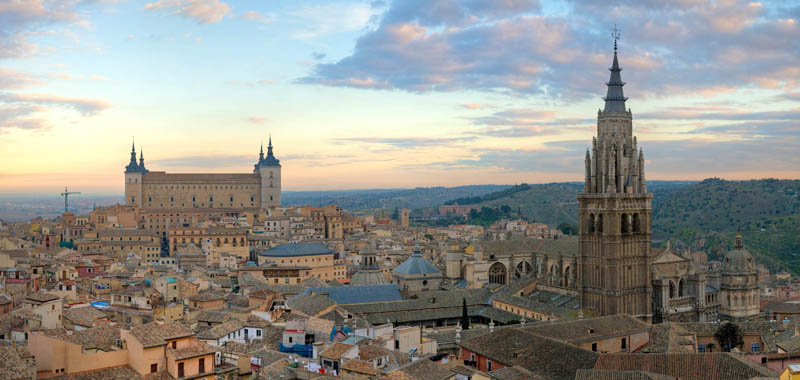
From the Golden Age to Contemporary Spanish Stage
May 12-22, 2016
Course Description: To read and explore with sensitivity a representative sample of cultural theatre theories and to understand how the plays interact with culture and society. Students will explore and experience the performance dimension of theatre and to come to a better understanding and appreciation of theatre traditions around the globe From vernacular Latin to Catalan, Galician and Basque, this course engages with the work of theater practitioners from Spain paratheatrical activities and popular performance, such as the commedia de magia and flamenco, alongside the works of Spain’s major dramatists, from Lope de Vega to Federico García Lorca. Students will visit Madrid, Almagro, Valencia, Zaragoza and Barcelona.
INCLUDES
- 10 Nights hotel accommodations
- Hotel taxes and service charges
- Breakfast throughout
- Welcome dinner in Madrid
- Farewell dinner in Barcelona
- Two lunches
- Airport transfer on departure
- Sightseeing as indicated
- Sightseeing guides as per program
- Coach transportation for sightseeing as indicated above
- Coach transportation from departure in Madrid on May 15 to arrival in Barcelona May 19
- English speaking escort from departure in Madrid on May 15 to arrival in Barcelona May 19
ACCOMMODATIONS
Hotels & Hostals (or similar)
Madrid: Hostal GALA MADRID – A unique experience awaits you in the heart of Madrid. Hostal Gala offers all modern, comfort and simplicity.. In a few minutes it is possible to reach the most important sites like Puerta de Sol, the Royal Palace, the Gran Vía Street, the famous neighborhood of Chueca, or the “Artistic Triangle” of Madrid, which includes the three most important art museums: Prado, Reina Sofía and Thyssen Borne
Almagro: Hotel RETIRO DEL MAESTRE – A wonderful small boutique hotel in the town of Almagro. It was at one time an old manor house that has been converted into a wonderful hotel. The rooms are comfortable and very well adorned.
Valencia: The VALENCIA LAS CIENCIAS formerly known as NH Las Artes II, puts you in a prime location for visiting the city’s vast architectural complex and just a short bus ride to the center of town. The 121 rooms are comfortable and modern and many of them come with views across the neighboring park
Zaragoza: The Hotel Sauce in Zaragoza is located in a prime location in the historic artistic center and about 300 feet from the Plaza del Pillar — the heart of the city, where two of the symbols of Zaragoza: The Cathedral of Seo and the Basilica del Pilar are located.
Barcelona: HOSTAL GEN BARCELONA – High ceilings adorned with hanging lanterns are reminiscent of Fiesta Major de Gracia, Floors forged with ornate tiles and a lobby with a staircase winding its way up to a glass balconied mezzanine. Gen Barcelona is truly a tapestry of layers and styles. When you’re not soaking up the sun on the terrace overlooking the city, you can relax in the lounge.
ITINERARY
DAY 01 – May 12 – Arrival in MADRID (D)
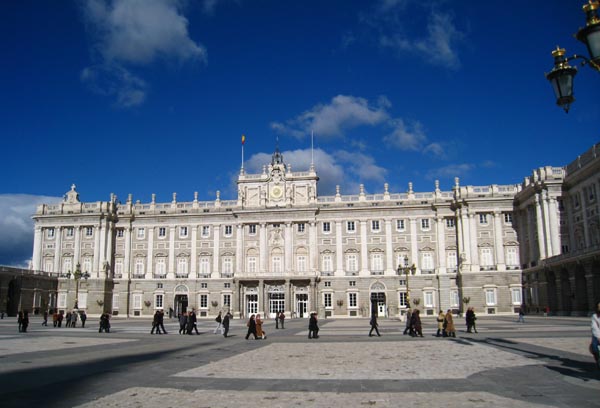 Arrival in Madrid on your own and proceed on your own to your reserved hotel accommodations. Free time to unpack and relax. In the afternoon, a panoramic and walking tour of Madrid, including the inside visit of the Royal Palace This highlight tour of Madrid will show the best of this fascinating city, taking us on a guided visit through the main areas such as the Gran Vía, main artery of the city, and beautiful squares such as Plaza España (where Cervantes Memorial and Don Quixote’s statue is found), and the magnificent Retiro Park. This combined visit – half panoramic and half on foot – around the charming area and the streets of the Old Madrid, while making strategic stops so we don’t miss the must-sees of this charming and amazing city that has managed to absorb the modern advantages of internationalization without abandoning its character! Included is the Royal Palace, where as Napoleon remarked to his brother (who he made king of Spain), “You will be better lodged here than I am myself in Paris.” The massive bright-white Royal Palace on the Plaza de Oriente dates from 1734, when the 3,000-room royal residence was commissioned by Philip V. The grandiose state apartments are filled with art treasures, antiques and opulent Rococo décor that could rival Versailles. Tonight. it’s a welcome dinner at the Torres Bermejas, opened in 1960 and unique in the world with its flamenco show. Torres Bermejas is also unique for its stunning room that reproduces inside the Bermejas towers of the Alhambra in Granada, with walls with Arabic motifs, tiles and wooden coffered ceilings.
Arrival in Madrid on your own and proceed on your own to your reserved hotel accommodations. Free time to unpack and relax. In the afternoon, a panoramic and walking tour of Madrid, including the inside visit of the Royal Palace This highlight tour of Madrid will show the best of this fascinating city, taking us on a guided visit through the main areas such as the Gran Vía, main artery of the city, and beautiful squares such as Plaza España (where Cervantes Memorial and Don Quixote’s statue is found), and the magnificent Retiro Park. This combined visit – half panoramic and half on foot – around the charming area and the streets of the Old Madrid, while making strategic stops so we don’t miss the must-sees of this charming and amazing city that has managed to absorb the modern advantages of internationalization without abandoning its character! Included is the Royal Palace, where as Napoleon remarked to his brother (who he made king of Spain), “You will be better lodged here than I am myself in Paris.” The massive bright-white Royal Palace on the Plaza de Oriente dates from 1734, when the 3,000-room royal residence was commissioned by Philip V. The grandiose state apartments are filled with art treasures, antiques and opulent Rococo décor that could rival Versailles. Tonight. it’s a welcome dinner at the Torres Bermejas, opened in 1960 and unique in the world with its flamenco show. Torres Bermejas is also unique for its stunning room that reproduces inside the Bermejas towers of the Alhambra in Granada, with walls with Arabic motifs, tiles and wooden coffered ceilings.
DAY 02 – MAY 13 – In MADRID (B)
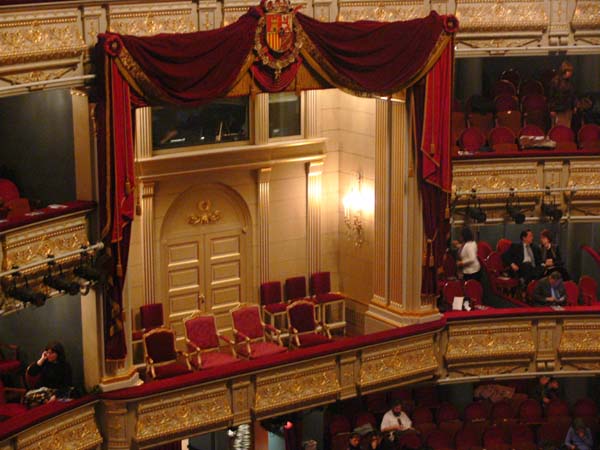 Buffet breakfast at the hotel followed by a guided visit to the Teatro Real. It’s not easy to explain what you will feel when we visit Teatro Real. Just by going through its doors and walking around its rooms, contemplating its splendid views of the Royal Palace and Plaza de Oriente, we’ll understand why it is so special. This is what Teatro Real is about. In the afternoon there is a guided visit to the Prado Museum. It is renowned as being the largest pinacotheque in the world and houses more than 8,600 paintings, of which no less than 2,000 are exhibited because of lack of space available. While it is hard to pick out the best from such an outstanding collection, El Prado boasts most of the major works of Velázquez, some superb works by the great El Greco and an excellent selection of Goya’s splendid portraits.
Buffet breakfast at the hotel followed by a guided visit to the Teatro Real. It’s not easy to explain what you will feel when we visit Teatro Real. Just by going through its doors and walking around its rooms, contemplating its splendid views of the Royal Palace and Plaza de Oriente, we’ll understand why it is so special. This is what Teatro Real is about. In the afternoon there is a guided visit to the Prado Museum. It is renowned as being the largest pinacotheque in the world and houses more than 8,600 paintings, of which no less than 2,000 are exhibited because of lack of space available. While it is hard to pick out the best from such an outstanding collection, El Prado boasts most of the major works of Velázquez, some superb works by the great El Greco and an excellent selection of Goya’s splendid portraits.
DAY 03– MAY 14 – In MADRID and an Excursion to TOLEDO (B)
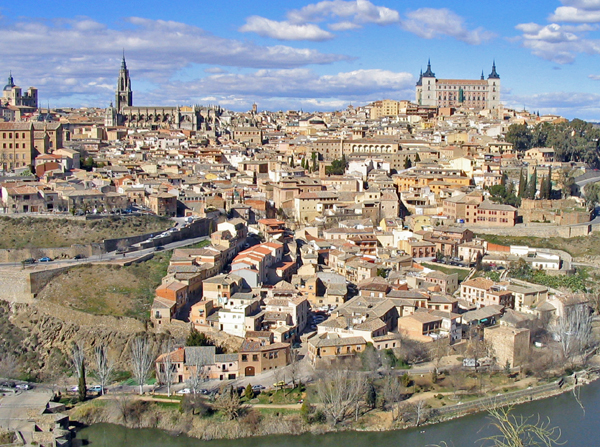 Buffet breakfast at the hotel followed by a morning workshop. In the afternoon, departure to Toledo by coach for a half-day excursion including visits to the Cathedral and Santa Maria Synagogue. Suspended between heaven and earth, Toledo has changed little from the day the Greek painter El Greco arrived in the 1570s. The city is one of the luxuries found in Spain. Its privileged location and the natural turn of the Tagus River create a unique city in which beautiful and harmonious buildings in an array of architectural styles take you to the Middle Ages. Walking through its intricate, windy conglomeration of narrow and often steep streets, one feels like having stepped back in time. The Cathedral dates back to Roman times and under the Visigoths it was a Basilica. Then under Moorish rule it became the city’s main Mosque. The construction of the great Gothic Cathedral began in 1226 and was completed in 1493, and as a result of these two and a half centuries of work there are clearly different architectural styles, notably Mudéjar (Moorish style whilst under Christian rule) and Spanish Renaissance. Amongst the priceless art collection inside the Cathedral the highlight is El Greco’s Twelve Apostles. Return to our hotel in Madrid later in the afternoon.
Buffet breakfast at the hotel followed by a morning workshop. In the afternoon, departure to Toledo by coach for a half-day excursion including visits to the Cathedral and Santa Maria Synagogue. Suspended between heaven and earth, Toledo has changed little from the day the Greek painter El Greco arrived in the 1570s. The city is one of the luxuries found in Spain. Its privileged location and the natural turn of the Tagus River create a unique city in which beautiful and harmonious buildings in an array of architectural styles take you to the Middle Ages. Walking through its intricate, windy conglomeration of narrow and often steep streets, one feels like having stepped back in time. The Cathedral dates back to Roman times and under the Visigoths it was a Basilica. Then under Moorish rule it became the city’s main Mosque. The construction of the great Gothic Cathedral began in 1226 and was completed in 1493, and as a result of these two and a half centuries of work there are clearly different architectural styles, notably Mudéjar (Moorish style whilst under Christian rule) and Spanish Renaissance. Amongst the priceless art collection inside the Cathedral the highlight is El Greco’s Twelve Apostles. Return to our hotel in Madrid later in the afternoon.
DAY 04 – MAY 15 – To MERIDA AND ALMAGRO (B/L)
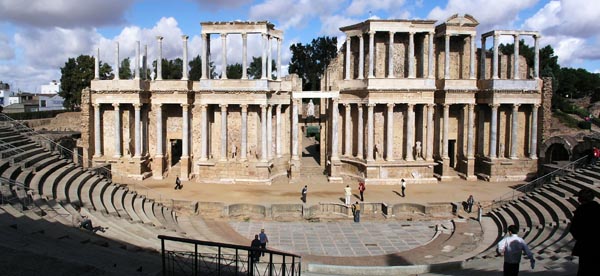 After an early breakfast, we board our coach and depart for Merida. Along the way we will have lunch at A De Arco featuring delicious local cuisine in a historical setting. After lunch we visit the Anthic Roman Theater of Mérida followed by a walk around in the city. The Roman Theater of Mérida was constructed in the years 16 to 15 BCE. The theater has undergone several renovations, notably at the end of the 1st century or early 2nd century CE (possibly during the reign of Emperor Trajan), when the current facade of the scaenae frons was erected, and another in the time of Constantine I (between 330 and 340) which introduced new decorative-architectural elements and a walkway around the monument. Following the theatre’s abandonment in Late Antiquity, it was slowly covered with earth, with only the upper tiers of seats (summa cavea) remaining visible. In local folklore the site was referred to as “The Seven Chairs,” where, according to tradition, several Moorish kings sat to decide the fate of the city.
After an early breakfast, we board our coach and depart for Merida. Along the way we will have lunch at A De Arco featuring delicious local cuisine in a historical setting. After lunch we visit the Anthic Roman Theater of Mérida followed by a walk around in the city. The Roman Theater of Mérida was constructed in the years 16 to 15 BCE. The theater has undergone several renovations, notably at the end of the 1st century or early 2nd century CE (possibly during the reign of Emperor Trajan), when the current facade of the scaenae frons was erected, and another in the time of Constantine I (between 330 and 340) which introduced new decorative-architectural elements and a walkway around the monument. Following the theatre’s abandonment in Late Antiquity, it was slowly covered with earth, with only the upper tiers of seats (summa cavea) remaining visible. In local folklore the site was referred to as “The Seven Chairs,” where, according to tradition, several Moorish kings sat to decide the fate of the city.
The theatre is located in the archaeological ensemble of Mérida, one of the largest and most extensive archaeological sites in Spain. It was declared a World Heritage Site by UNESCO in 1993. We then depart for Almagro (about a 3 hour drive) and check into our hotel. Almagro is a beautiful town whose heyday was in the 15 and 16th century when the Fugger family, bankers to Carlos V, lived here. They brought a northern European influence to the town which can still be seen today.
DAY 05 – MAY 16 – In ALMAGRO/CIUDAD REAL and then onto VALENCIA (B)
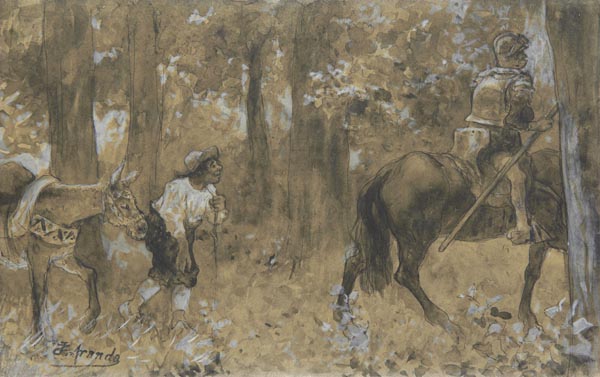 We start the day going to the local museums, starting with the Museo del Teatro This is the only museum dedicated exclusively to the history of the theater in Spain. Its collection offers a journey through the history of theatrical performance in Spain, from Greco-Roman theater all the way through to the 20th-century avant-garde movements, including mediaeval theater, the Golden Age, Romanticism zarzuela and Opera. There are over 8,000 works on paper, including stage and costume design, drawings and prints, as well as collections of painting, sculpture, photographs (over 25,000 images since 1870), miniature models, programs and costumes (over 2,000 items of clothing since the late 18th century). We continue our museum touring with a visit to the Don Quixote’s Museum of Almagro. This museum combines art and multimedia exhibits in tribute to the immortal character created by Miguel de Cervantes. The different exhibitions in the center are dedicated to Cervantes’ famous novel, Don Quixote. Here you can see a montage in which 10 characters from the novel have a conversation. There are also ten or so paintings on Cervantes-related topics by José Jiménez Aranda, one of the best 19th-century illustrators of Don Quixote. Furthermore, the museum library has a major collection of books on Cervantes-related topics comprising 3,500 volumes. Lunch on our own. In the afternoon, we board our coach for the 3-hour drive to Valencia. Check into our hotel.
We start the day going to the local museums, starting with the Museo del Teatro This is the only museum dedicated exclusively to the history of the theater in Spain. Its collection offers a journey through the history of theatrical performance in Spain, from Greco-Roman theater all the way through to the 20th-century avant-garde movements, including mediaeval theater, the Golden Age, Romanticism zarzuela and Opera. There are over 8,000 works on paper, including stage and costume design, drawings and prints, as well as collections of painting, sculpture, photographs (over 25,000 images since 1870), miniature models, programs and costumes (over 2,000 items of clothing since the late 18th century). We continue our museum touring with a visit to the Don Quixote’s Museum of Almagro. This museum combines art and multimedia exhibits in tribute to the immortal character created by Miguel de Cervantes. The different exhibitions in the center are dedicated to Cervantes’ famous novel, Don Quixote. Here you can see a montage in which 10 characters from the novel have a conversation. There are also ten or so paintings on Cervantes-related topics by José Jiménez Aranda, one of the best 19th-century illustrators of Don Quixote. Furthermore, the museum library has a major collection of books on Cervantes-related topics comprising 3,500 volumes. Lunch on our own. In the afternoon, we board our coach for the 3-hour drive to Valencia. Check into our hotel.
DAY 06 – MAY 17 – In VALENCIA (B)
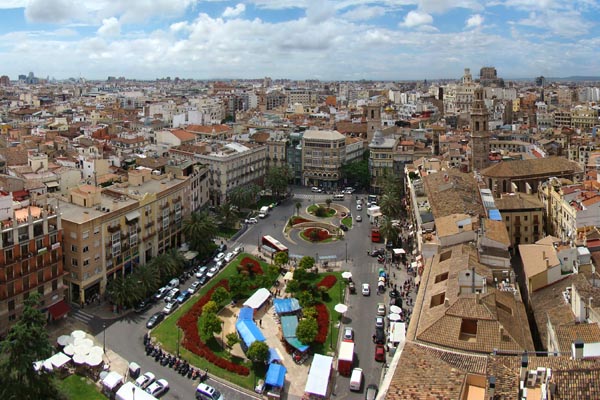 After breakfast, a morning workshop In the afternoon, we have a guided city tour of Valencia. On the East side of Spain, Valencia is one of the country’s best-kept secrets. Bathed by the Mediterranean Sea it offers one of the best combination of the elements which will guarantee a special journey: gastronomy, (being the homeland of the world famous paella), a great cultural heritage with some of the most beautiful monuments of Spain and also some masterpieces of the modern architecture at the impressive complex of the City of Arts. Valencia has been the home of many cultures over its history with Romans, Visigoths, Moors and the Aragonese all making the city an important cultural and financial center.
After breakfast, a morning workshop In the afternoon, we have a guided city tour of Valencia. On the East side of Spain, Valencia is one of the country’s best-kept secrets. Bathed by the Mediterranean Sea it offers one of the best combination of the elements which will guarantee a special journey: gastronomy, (being the homeland of the world famous paella), a great cultural heritage with some of the most beautiful monuments of Spain and also some masterpieces of the modern architecture at the impressive complex of the City of Arts. Valencia has been the home of many cultures over its history with Romans, Visigoths, Moors and the Aragonese all making the city an important cultural and financial center.
DAY 07 – MAY 18 – To ZARAGOZA (B/L)
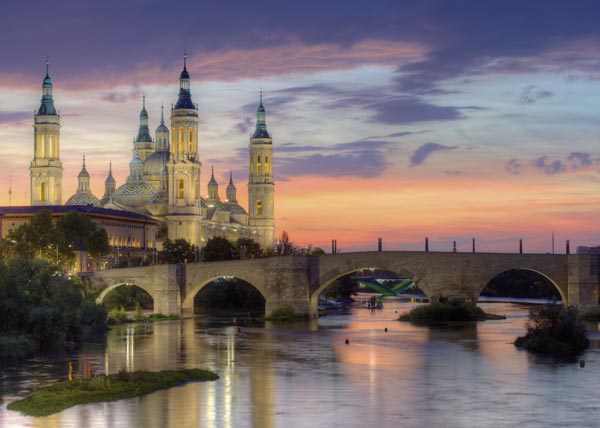 After breakfast, we board our coach for the drive to Zaragoza. We will have lunch along the way as this is about a 3-1/2 hour ride. After checking into our hotel, we will have a panoramic tour of the city with its 2,000 years of history. Here we will find a stunning legacy of monuments on the city streets – vestiges of the Roman, Moorish, Jewish and Christian communities who left their mark. Roman ruins such as the Circus; Aljafería Palace; Mudejar-style churches, with the UNESCO World Heritage designation; Baroque gems like the Pilar Basilica; the work of brilliant artist Fancisco de Goya are all part of this montage.
After breakfast, we board our coach for the drive to Zaragoza. We will have lunch along the way as this is about a 3-1/2 hour ride. After checking into our hotel, we will have a panoramic tour of the city with its 2,000 years of history. Here we will find a stunning legacy of monuments on the city streets – vestiges of the Roman, Moorish, Jewish and Christian communities who left their mark. Roman ruins such as the Circus; Aljafería Palace; Mudejar-style churches, with the UNESCO World Heritage designation; Baroque gems like the Pilar Basilica; the work of brilliant artist Fancisco de Goya are all part of this montage.
DAY 08 – MAY 19 – To TARRAGONA and onto BARCELONA (B/L)
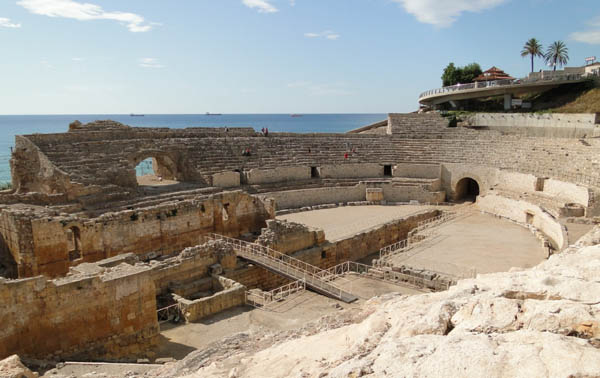 Depart for Tarragona, capital of Hispania Citerior during the Roman Empire. It still preserves numerous constructions dating from that period. The walls, which surrounded the historic center, were raised in the 3rd century B.C., although they were reconstructed during the mediaeval period. Next to the sea are stands of the Roman amphitheatre (2nd century B.C.), which had capacity for over 12,000 people. This was the venue for fights between gladiators and wild animals. The ancient city of Tarraco also had a theater and a circus. The theater stood outside the walled enclosure on what is today is the Paseo Arqueológico (archaeological walk). It was built to make the most of the different ground levels. The vaults which supported the seating area of the circus can still be seen around the Plaça de la Font square; this was where the chariot races took place. The historic center of the city unfolds between the Mediterranean Sea and the ancient city walls. In this area stands the cathedral of Santa María, the site of a Roman temple dedicated to Jupiter, as well as a Muslim mosque. We have lunch here and a workshop before we continue to Barcelona.
Depart for Tarragona, capital of Hispania Citerior during the Roman Empire. It still preserves numerous constructions dating from that period. The walls, which surrounded the historic center, were raised in the 3rd century B.C., although they were reconstructed during the mediaeval period. Next to the sea are stands of the Roman amphitheatre (2nd century B.C.), which had capacity for over 12,000 people. This was the venue for fights between gladiators and wild animals. The ancient city of Tarraco also had a theater and a circus. The theater stood outside the walled enclosure on what is today is the Paseo Arqueológico (archaeological walk). It was built to make the most of the different ground levels. The vaults which supported the seating area of the circus can still be seen around the Plaça de la Font square; this was where the chariot races took place. The historic center of the city unfolds between the Mediterranean Sea and the ancient city walls. In this area stands the cathedral of Santa María, the site of a Roman temple dedicated to Jupiter, as well as a Muslim mosque. We have lunch here and a workshop before we continue to Barcelona.
DAY 09 – MAY 20 – In BARCELONA (B)
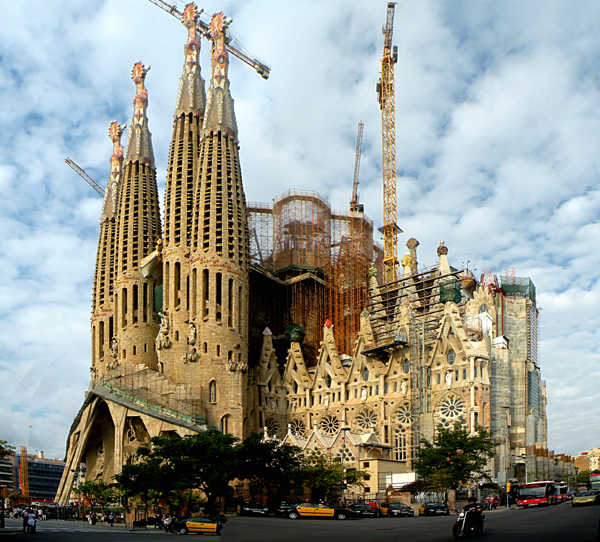 We start the morning with a panoramic tour of the city including a stop at Sagrada Familia followed by a walking tour to discover the Gothic Quarter We start with Gaudi’s unfinished church La Sagrada Familia that is intended to be a symbolic building with three façades dedicated to Christ’s Nativity, Passion and Glory. Gaudi designed it as a Neogothic building but changed the initial plans and turned it into a building in which architectural elements were superimposed on each other. The four towers of the Nativity façade are one of the famous landmarks on the Barcelona skyline. We will have the opportunity to visit the interior of the still unfinished temple and discover the inside details of this masterwork. This followed by a walking tour to discover the Gothic Quarter on foot that starts at the Cathedral and Plaza del Rei (King’s Square). The Cathedral is a good example of the upright feature of Catalan Gothic Architecture. We’ll visit the cloister, the chapter House and the Holy ‘Cristo de Lepanto’. The afternoon is devoted to theater tours where we will get an opportunity to discover a few of Barcelona’s theaters. First, the Liceu Theater “Barcelona’s opera house.” The Gran Teatre del Liceu, was founded on the Rambla in 1847 and has continued over the years to fulfill its role as a culture and arts center and is one of the symbols of the city. Then the Theatre Nacional de Catalunya, which is one of the most advanced facilities of its kind in Europe designed by the internationally awarded architect Ricardo Bofill. Return to our hotel and dinner on our own.
We start the morning with a panoramic tour of the city including a stop at Sagrada Familia followed by a walking tour to discover the Gothic Quarter We start with Gaudi’s unfinished church La Sagrada Familia that is intended to be a symbolic building with three façades dedicated to Christ’s Nativity, Passion and Glory. Gaudi designed it as a Neogothic building but changed the initial plans and turned it into a building in which architectural elements were superimposed on each other. The four towers of the Nativity façade are one of the famous landmarks on the Barcelona skyline. We will have the opportunity to visit the interior of the still unfinished temple and discover the inside details of this masterwork. This followed by a walking tour to discover the Gothic Quarter on foot that starts at the Cathedral and Plaza del Rei (King’s Square). The Cathedral is a good example of the upright feature of Catalan Gothic Architecture. We’ll visit the cloister, the chapter House and the Holy ‘Cristo de Lepanto’. The afternoon is devoted to theater tours where we will get an opportunity to discover a few of Barcelona’s theaters. First, the Liceu Theater “Barcelona’s opera house.” The Gran Teatre del Liceu, was founded on the Rambla in 1847 and has continued over the years to fulfill its role as a culture and arts center and is one of the symbols of the city. Then the Theatre Nacional de Catalunya, which is one of the most advanced facilities of its kind in Europe designed by the internationally awarded architect Ricardo Bofill. Return to our hotel and dinner on our own.
DAY 10 – MAY 21 – In BARCELONA (B/D)
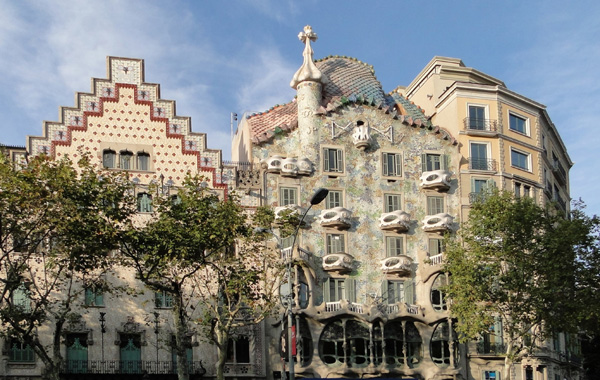 Buffet breakfast at the hotel followed by a morning workshop. After lunch on our own we start our afternoon with a visit to the Picasso Museum and Born District, highlighted with taste of chocolate con Churros as we also visit a Chocolate Museum. Then onto the Born district, also known as Ribera located in the original heart of the city. Many artists have set up their studios in the La Ribera neighborhood, inheriting the past where Barcelona’s artisans used to live. Many street names remind us of the ancient trades and skills: Mirallers (mirror makers), Sombrerers (hatters), Argenters (silversmiths), etc. Streets that grew up around the church of Santa Maria del Mar, which is, without a shadow of a doubt, the masterpiece of Catalan Gothic architecture. By the 13th century, Barcelona needed to expand beyond its city walls and a separate borough was created, which soon became the district where merchants and the wealthiest Barcelona families came to live. Carrer Montcada, currently the home of art galleries and major museums such as the Museu Picasso, formed the center of this affluent part of Barcelona. The medieval palazzos are a vivid reminder of this past. The walk ends with a visit to the Picasso Museum, tangible proof of the artist’s desire to acknowledge his links both with the city and with Catalonia. Picasso assisted in the creation of the Museum by making a series of donations in honor of the city where he spent his youth and formative years. The Museum occupies three palaces of characteristic Catalan Gothic style. After we return to the hotel and time to rest, we have our Farewell Dinner.
Buffet breakfast at the hotel followed by a morning workshop. After lunch on our own we start our afternoon with a visit to the Picasso Museum and Born District, highlighted with taste of chocolate con Churros as we also visit a Chocolate Museum. Then onto the Born district, also known as Ribera located in the original heart of the city. Many artists have set up their studios in the La Ribera neighborhood, inheriting the past where Barcelona’s artisans used to live. Many street names remind us of the ancient trades and skills: Mirallers (mirror makers), Sombrerers (hatters), Argenters (silversmiths), etc. Streets that grew up around the church of Santa Maria del Mar, which is, without a shadow of a doubt, the masterpiece of Catalan Gothic architecture. By the 13th century, Barcelona needed to expand beyond its city walls and a separate borough was created, which soon became the district where merchants and the wealthiest Barcelona families came to live. Carrer Montcada, currently the home of art galleries and major museums such as the Museu Picasso, formed the center of this affluent part of Barcelona. The medieval palazzos are a vivid reminder of this past. The walk ends with a visit to the Picasso Museum, tangible proof of the artist’s desire to acknowledge his links both with the city and with Catalonia. Picasso assisted in the creation of the Museum by making a series of donations in honor of the city where he spent his youth and formative years. The Museum occupies three palaces of characteristic Catalan Gothic style. After we return to the hotel and time to rest, we have our Farewell Dinner.
DAY 11 – MAY 22 – To USA (B)
After breakfast, an early transfer to the airport will be available for your return flight.
For Additional Information and Reservations, please contact:
Kristina A. Byrne, MSEd.
Education Abroad Program Coordinator | Pace International Pace University | 861 Bedford Rd, Kessel Student Center 212| Pleasantville, NY 10570
914-773-3425 | kbyrne3@pace.edu
